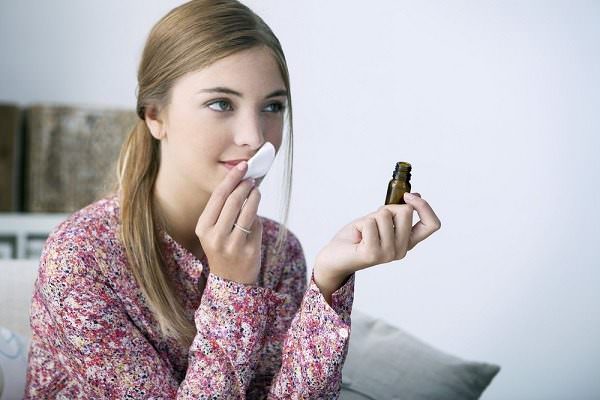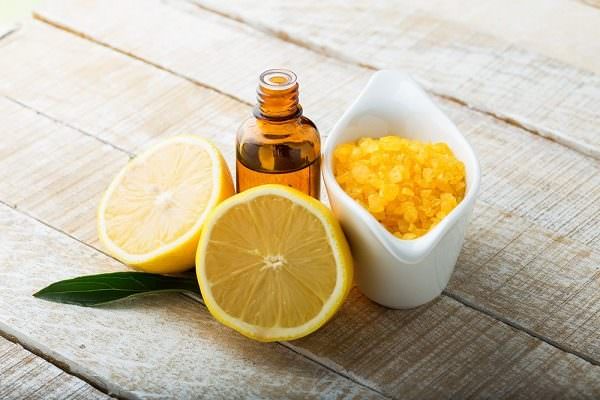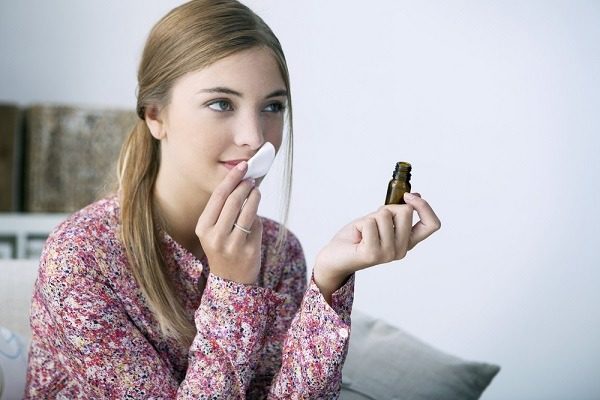All across the globe, people suffer from ailments such as headaches, anxiety, insomnia, nail fungus, minor cuts and more. Relief usually comes in the form of pharmaceuticals or, alternatively, essential oils. Derived from Mother Earth, essential oils can provide relief very quickly, often creating a desired response within minutes.
If you’re new to essential oils, start small. Less is more. Try picking one or two oils, or address one or two ailments. Below you’ll find three different use methods as well as four essential essential oils.
How To Use Essential Oils
Depending on the desired outcome, quality of the oil and personal preference, essential oils can be used in the three following ways:

Applied to the Skin
There are a variety of ways to apply essential oils to the skin. People with sensitive skin and children should be more careful with this method. Using a carrier oil such as olive, grapeseed, sweet almond or coconut oil is a helpful way to dilute the essential oils before applying them topically. Do not use butter, margarine or petroleum-derived products as carrier oils.
Essential oils are commonly applied to the feet, because they absorb well into the body this way. Massaging the feet first helps increase circulation and therefore the effectiveness of the oil. They are also sometimes applied to the ears, neck, forehead, chest or other affected areas of the body. Do not put essential oils in the eyes.

The smell of essential oils creates a response in the brain, and inhaling them is a very common method of use. Image credit: Image Point Fr / Shutterstock
Inhaled
The smell of essential oils creates a response in the brain, and inhaling them is a very common method of use. A couple drops of essential oil can be added to a spray bottle with water and sprayed. Oils can be smelled directly from the bottle, or added to a hot compress and applied to a certain part of the body. A drop or two can be applied to a handkerchief, put on a pillow, added in a bath, used in a diffuser or added to a bowl of hot water. Depending on the type of oil used, it can help deodorize, reduce stress, boost the immune system or induce sleep.
Ingested
Some people take certain oils internally, although some specific oils are not intended for internal use. Only internal-grade oils should be ingested, so read the bottle first. When these conditions are met, a couple drops of essential oils can be added to a glass of water, applied directly to the tongue or even used to add flavor to food. When ingesting oils, it is best to put them in glass or metal containers, as plastic containers can be broken down by the oils, causing people in ingest impurities.
Remedies Using 4 Essential Oils
1. Lavender
This oil has a calming effect, so it is a great way to help induce sleep and reduce anxiety. It can be added to a spray bottle with water and sprayed on the pillow or sheets, added to a diffuser before bedtime, or rubbed into the skin on the ears or feet.
Lavender oil is an effective and natural insect repellent. It also helps promote healing the skin from cuts, burns and acne and is helpful in removing splinters.
- Remedy #1: Mix lavender with a carrier oil and apply it topically to the skin.

Lemon essential oils are energizing, rejuvenating, detoxifying and disinfecting. Image credit: Antonova Anna / Shutterstock
2. Lemon
This is a highly versatile oil that has a long list of uses. Lemon is energizing, rejuvenating, detoxifying, and disinfecting. It is commonly used to boost energy and improve mental clarity, so apply it to the skin, inhale it, or add a couple drops of internal-grade oil in a glass of water when your energy level dips. It is also used to treat anxiety, either alone or in combination with lavender.
Another common use for lemon oil is in homemade cleaning products. Lemon oil is widely praised for its disinfecting, degreasing and deodorizing properties.
- Remedy #2: Add a few drops to your latest batch of DIY spray cleaner, dishwasher detergent, oven cleaner, laundry powder and furniture polish.
It has a great natural scent, unlike the synthetic fragrances that are used in many common household products.
3. Peppermint
This popular essential oil can treat a variety of conditions and has an energizing and clarifying effect. Peppermint oil helps treat headaches, freshen breath, soothe digestive issues and relieve sore muscles. It is an antimicrobial, so it gets to the root cause of bad breath and doesn’t merely mask it. Beware that the oil can create skin irritation in some people, so it is recommended to use a carrier oil when applying it.
- Remedy #3: For headaches, massage a little oil on the temples, forehead, and base of the neck, taking caution to avoid the eyes.
- Remedy #4: To freshen breath, add a drop of the oil to toothpaste or rinse with a drop of oil in a bit of water. For an upset stomach, inhale a bit of the oil or rub some externally on the stomach.
- Remedy #5: When treating sore muscles, rub a drop or two of oil on the affected areas.
Internal-grade peppermint oil can also be added to food to add flavor.
4. Tea Tree Oil
This essential oil has a long list of properties, including being antibiotic, antifungal, and antiseptic. Tea tree oil is great for naturally minimizing an acne outbreak, as well as treating athlete’s foot, yeast infections, warts, bad breath, dandruff, nail fungus, head lice, ringworm, and cuts. Note that this oil should not be ingested internally and should not be used by pregnant women, babies under 6 months, or breastfeeding women. Because the oil has strong properties, it may cause skin irritation when applied in its concentrated form, so consider using a carrier oil or test a small patch of skin to see if you have a reaction.
- Remedy #6: To treat acne, nail fungus, athlete’s foot, ringworm, cuts or warts, simply apply a drop or two to a cotton swab and apply to the skin using great caution to avoid the eyes. Reapply a couple of times a day until the symptoms subside.
- Remedy #7: To treat a yeast infection, add a drop or two of oil to a carrier oil and apply to the affected area several times a day until the issue is gone.
- Remedy #8: To treat bad breath or inflamed gums, add a drop to toothpaste or rinse with a drop or two of oil in a bit of water. Be sure not to swallow the tea tree oil and beware that it will have a strong taste.
- Remedy #9: To treat lice, mix 1 teaspoon of tea tree oil to 2 tablespoons of olive oil. Apply enough to coat all the hair, especially near the roots of the hair. Put a shower cap on and let the mixture remain on your hair for at least 30 minutes. Rinse out the oil out and then try to comb your hair with a nit comb for lice. Repeat this procedure several times, as this treatment will likely kill the bugs but not necessarily the eggs.
- Remedy #10: To treat dandruff, add tea tree oil to your shampoo, so it is a 1 to 20 ratio of tea tree oil to shampoo. Use the shampoo once a week and keep it away from your eyes when lathering.
Feature image credit: marilyn barbone / Shutterstock
Editor’s note: Originally published on September 2, 2016, this article was updated in August 2018.
The post 10 Relief Remedies Using Essential Oils appeared first on Earth 911.








